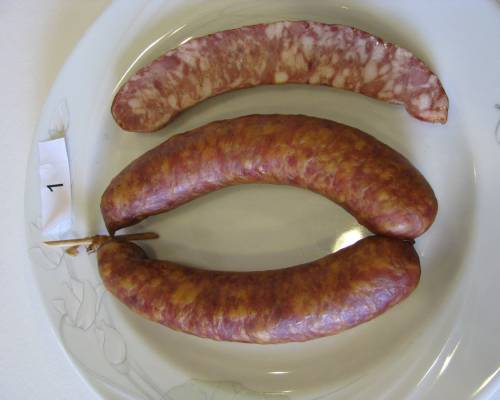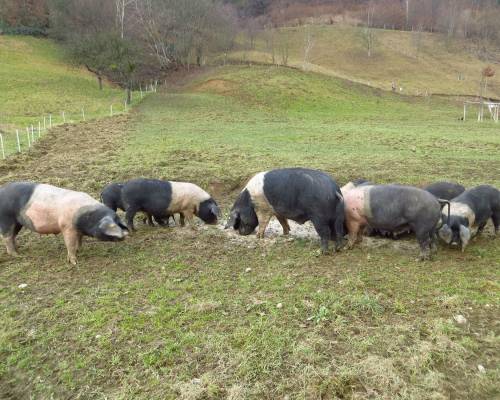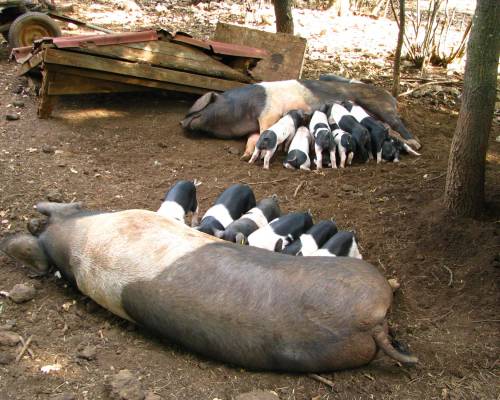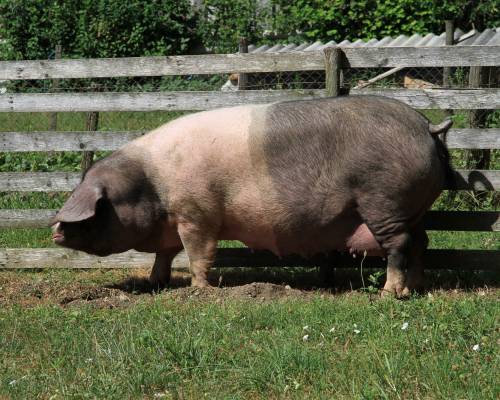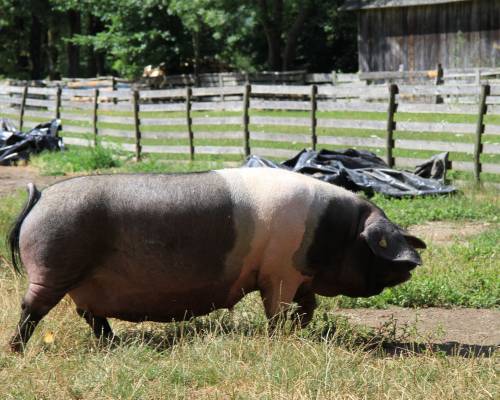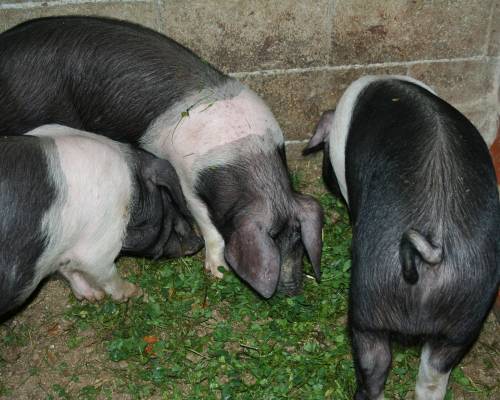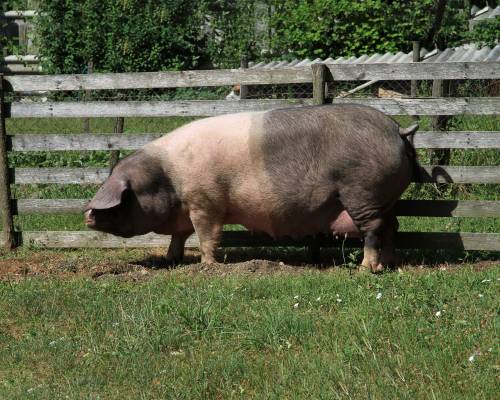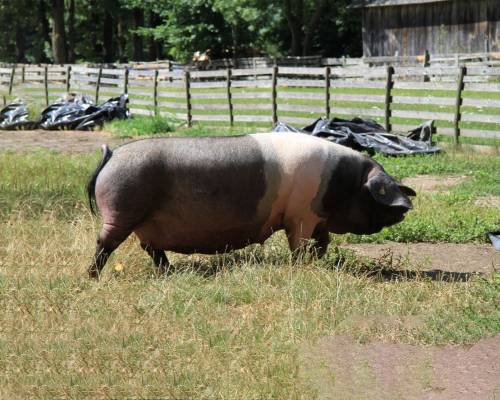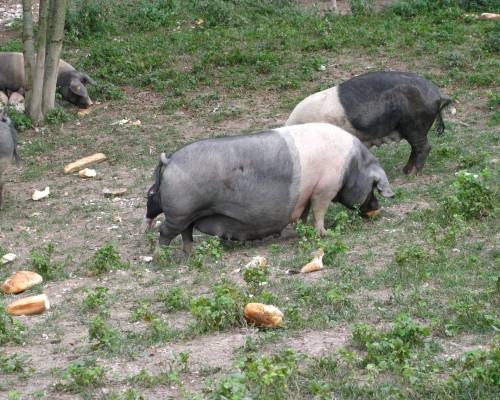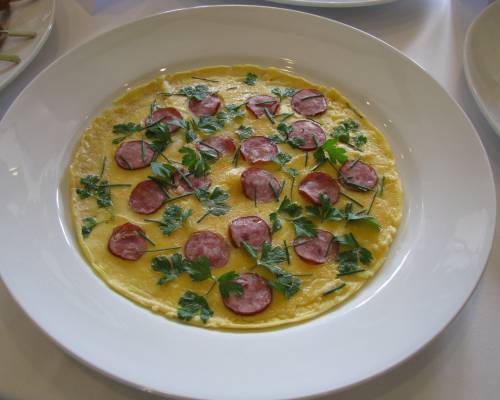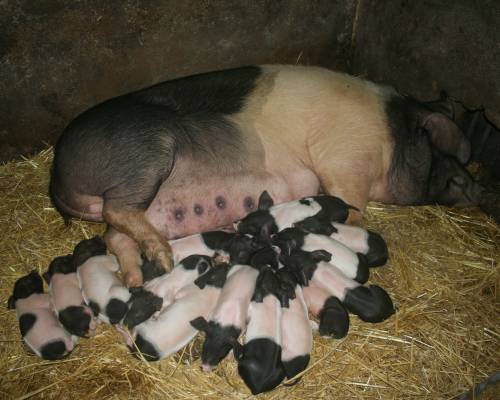Krškopolje pig
Origin and Development of the Breed
The Krškopolje pig is the only preserved Slovenian autochthonous pig breed. It originated in the southeastern part of Lower Carniola, particularly in the Krško-Brežiško field and the foothills of the Gorjanci mountains. Historically, it has also been referred to as the black-belted pig.
Breed Characteristics
This breed is characterized by a continuous white belt across the shoulders and front legs, with the rest of the body being black. The snout is also white. The bristles are straight and dark on the pigmented areas. The ears are drooping, and the nasal profile is slightly concave. Adult sows measure between 155 and 175 cm in body length, with a withers height of 80 to 85 cm. Young sows give birth to 5 to 10 piglets per litter, while older sows have between 7 and 13 piglets. With abundant feeding, fatteners can gain up to 1 kg per day; however, excessive feeding can lead to increased fat deposition. The dressing percentage is close to 80%, with a lean meat content ranging from 40 to 45%.
Breed Distribution and Endangerment
The population of Krškopolje pigs has been increasing over the years and has spread throughout Slovenia. Despite this growth, the breed remains endangered. The herdbook records over 300 sows and 55 boars.
Did You Know? ...
... the meat of the Krškopolje pig was traditionally used as the basis for the renowned Carniolan sausage?
Breeding Purpose and Products
The Krškopolje pig is a non-improved breed, historically valued for its modest requirements and lard production. Today, it is suited for rearing in modest conditions with ample roughage and is also suitable for outdoor farming. Its high-quality meat and fat are used to produce excellent cured meat products such as sausages, salami, bacon, cracklings, and even prosciutto.


